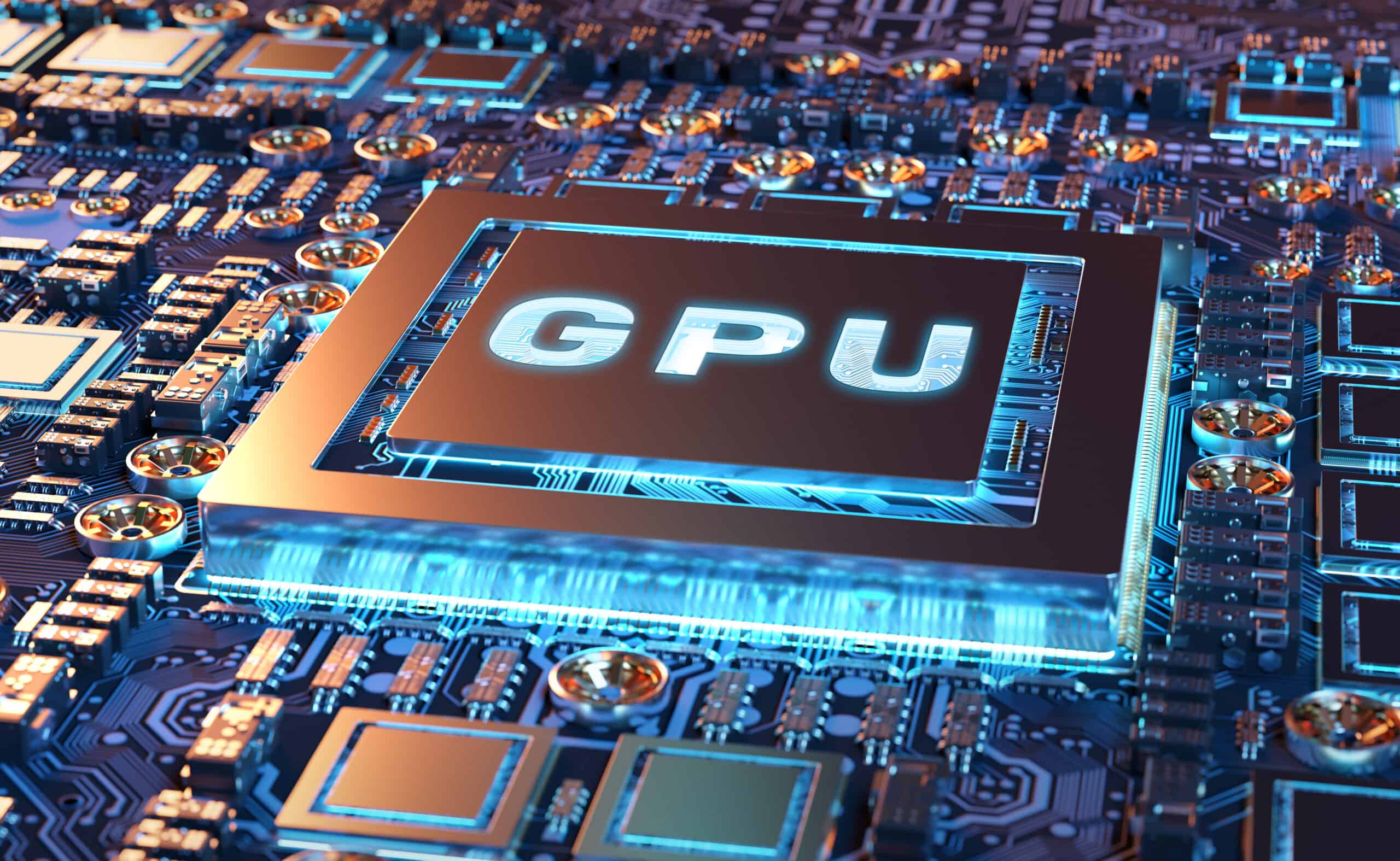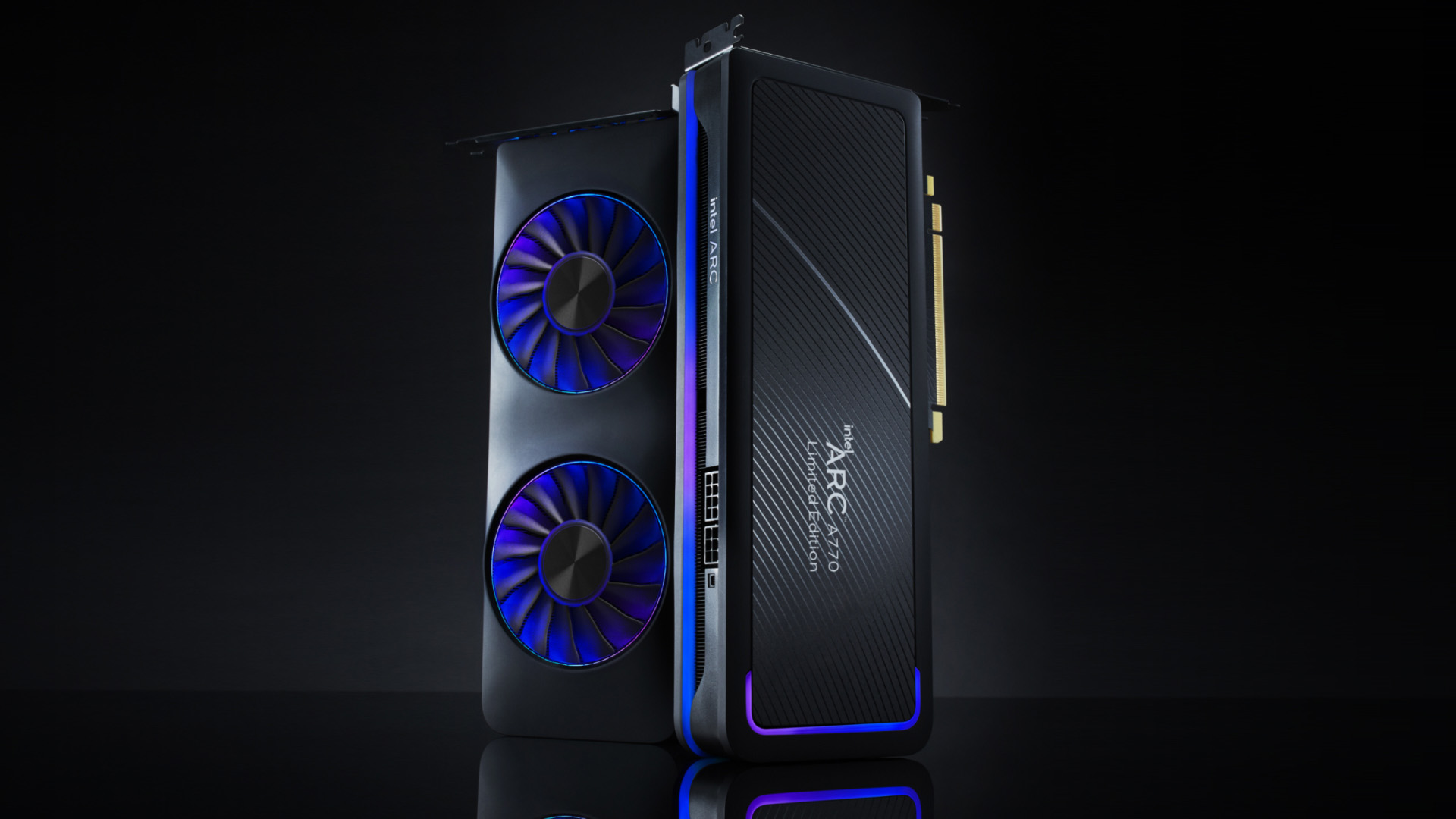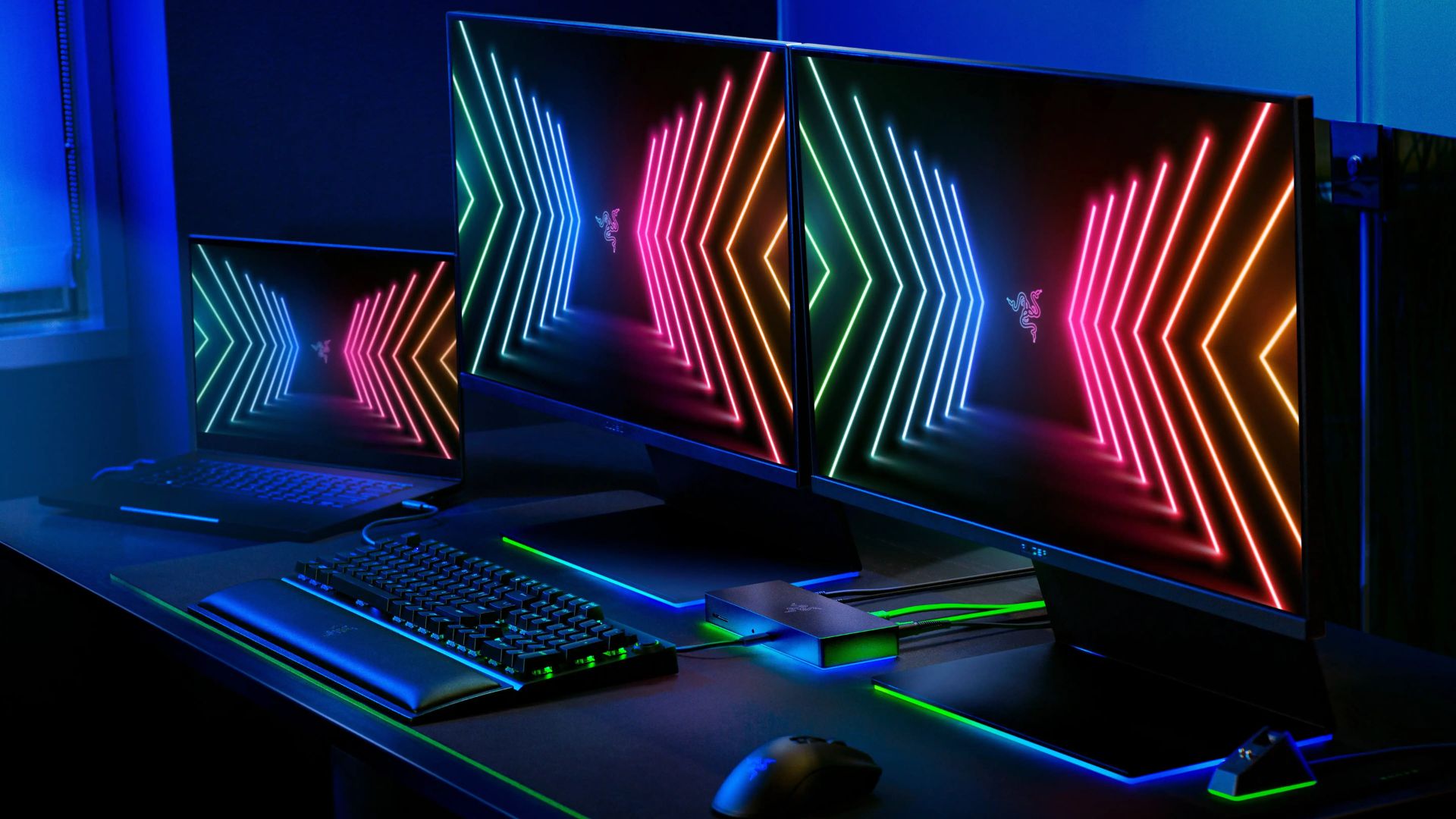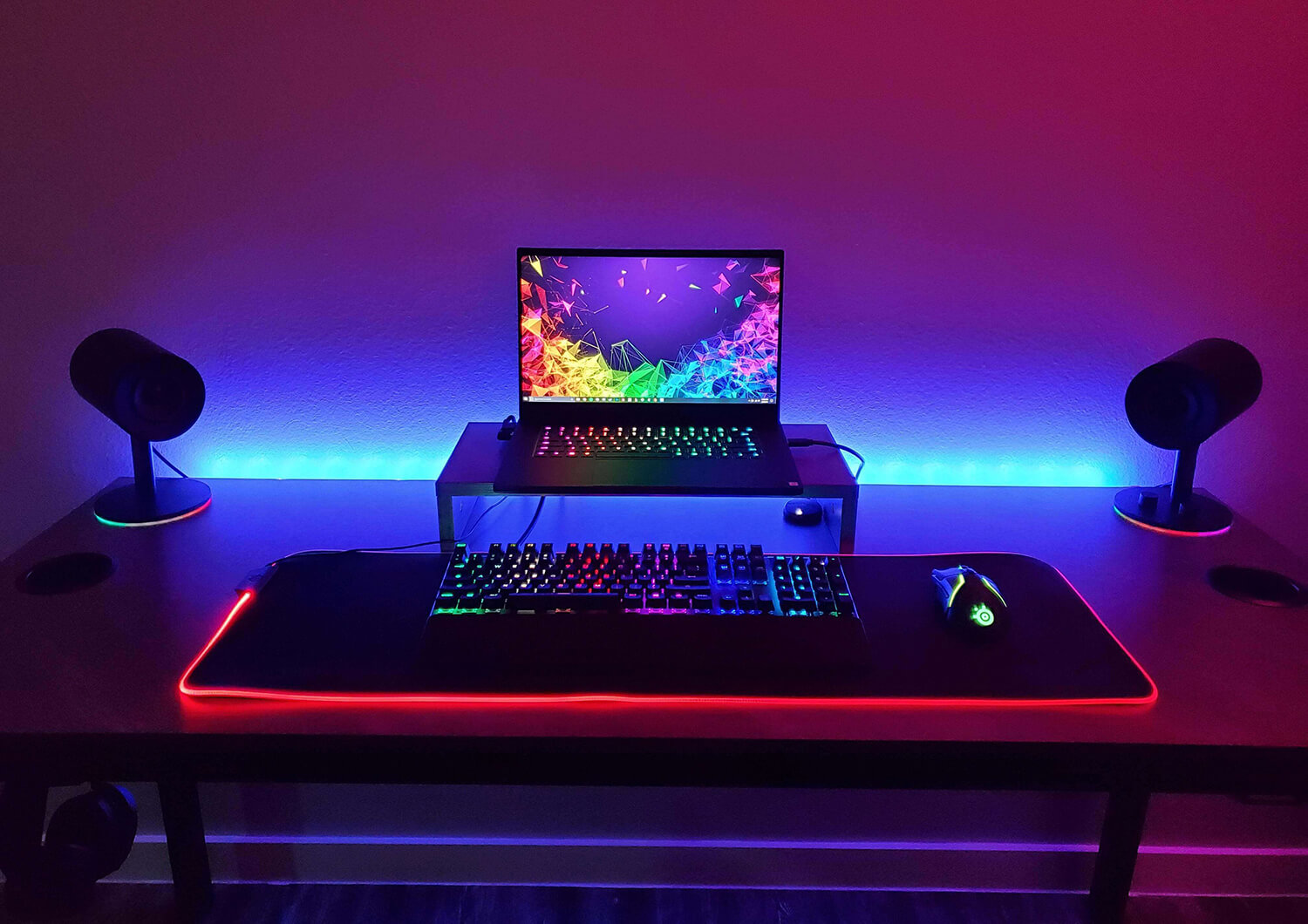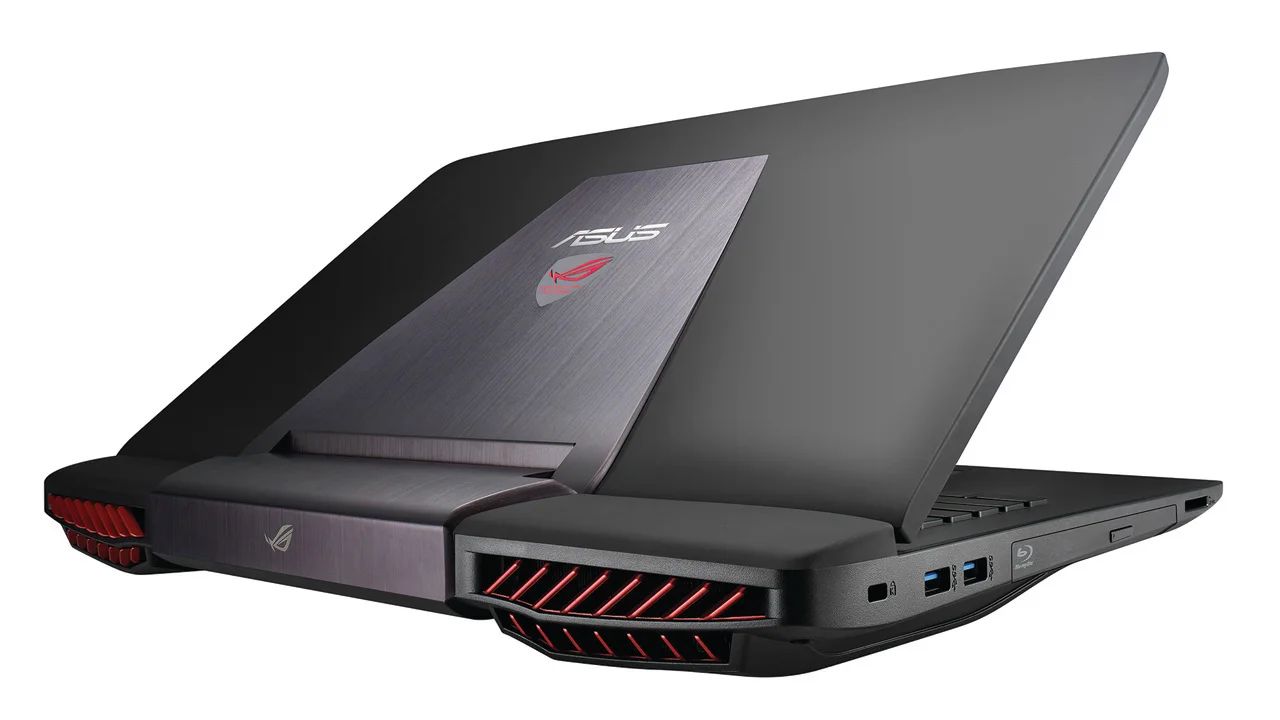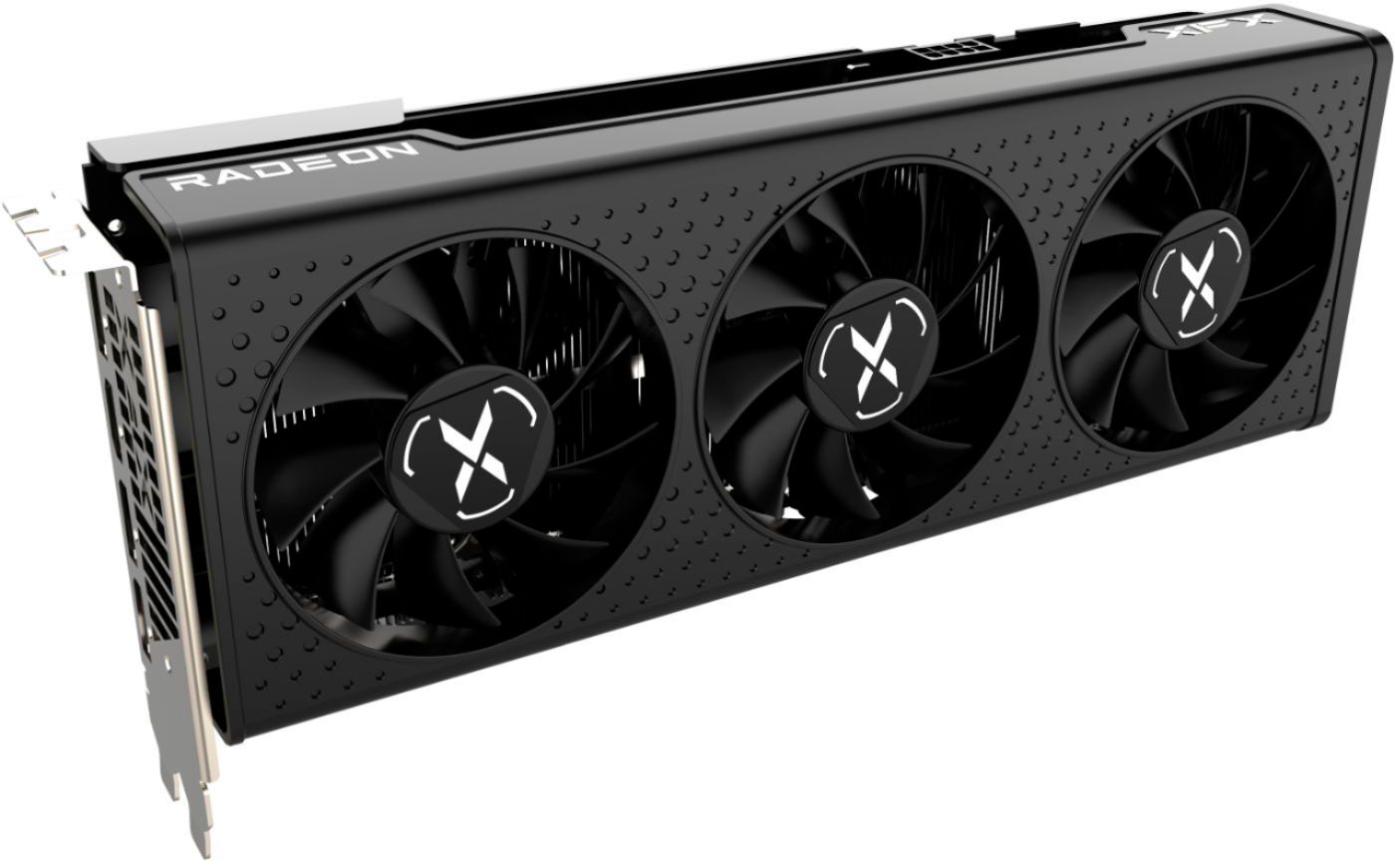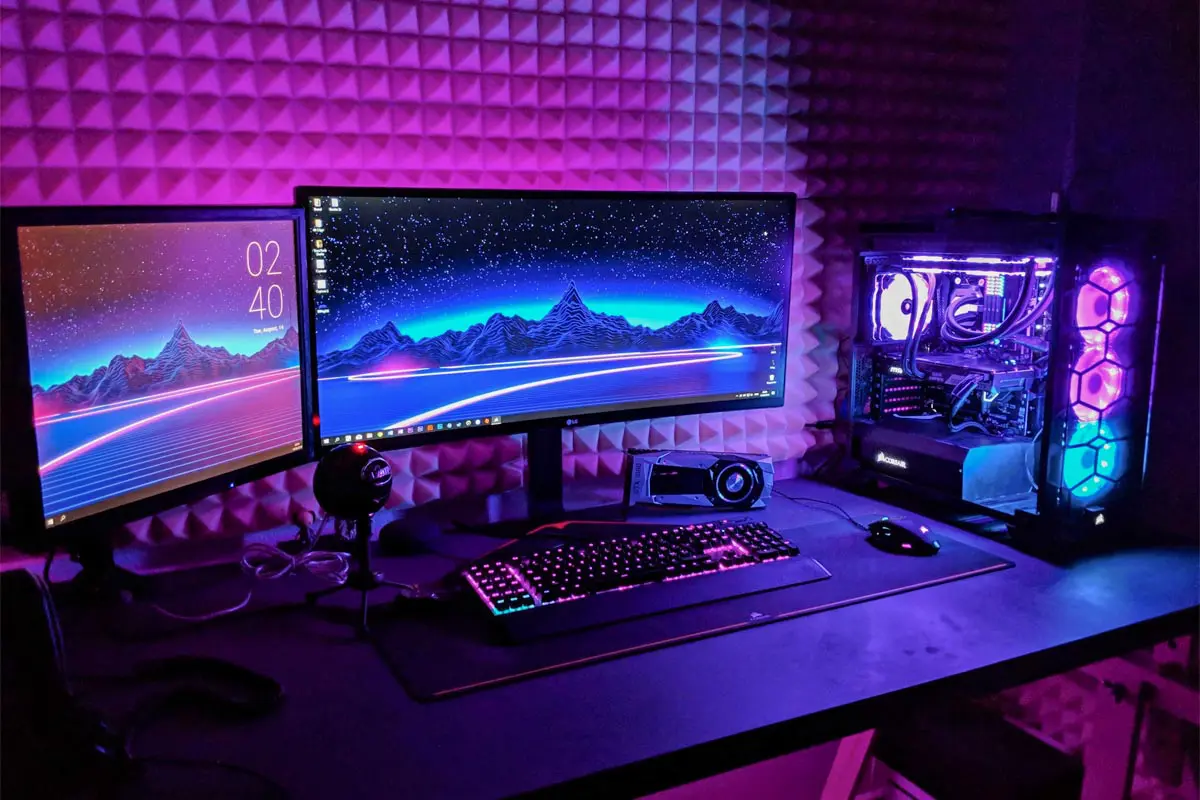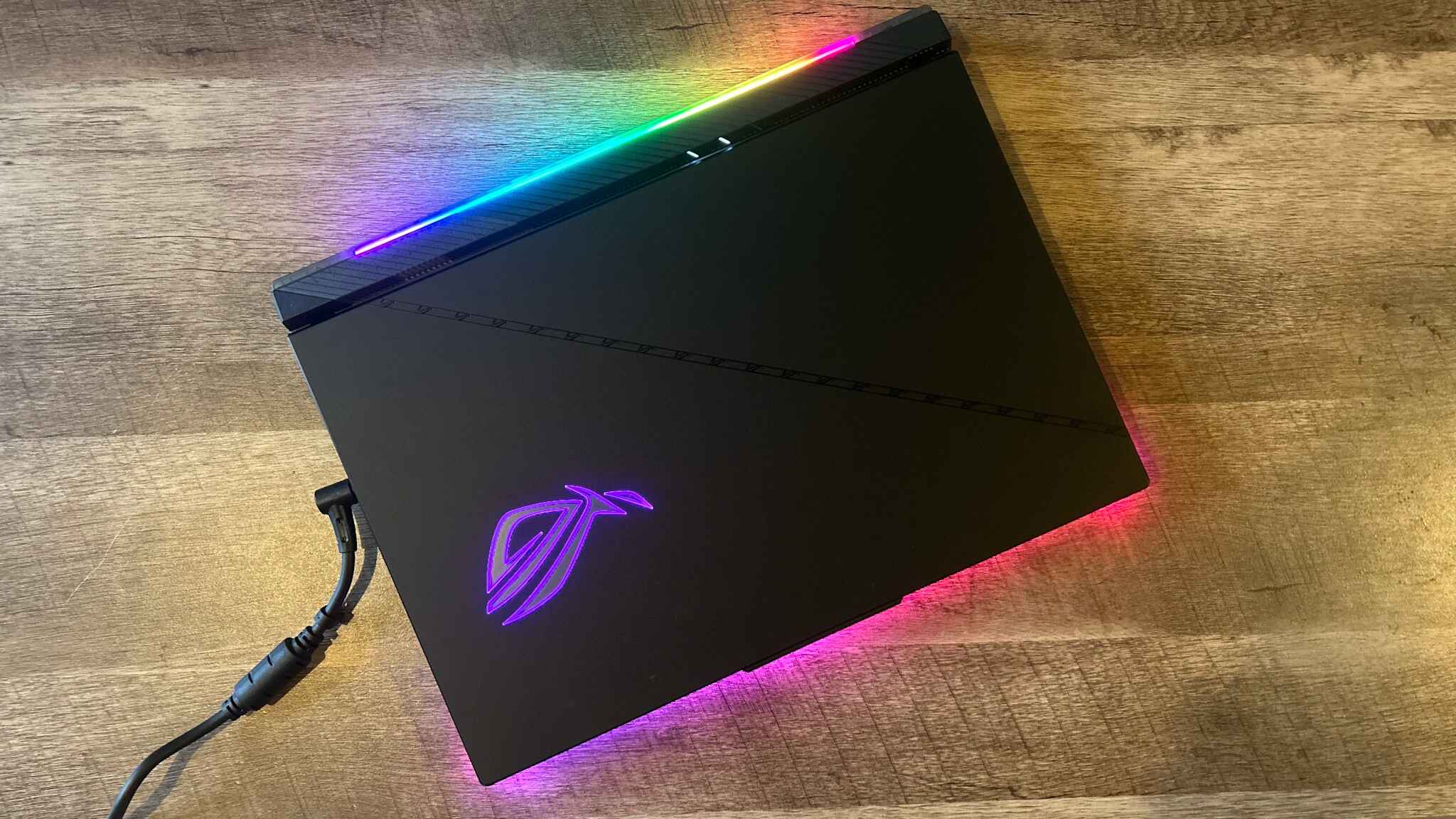Introduction
Welcome to the world of technological advancements, where the battle between the graphics card and the processor continues to engage tech enthusiasts and professionals alike. When it comes to enhancing the performance of your computer, these two components play a vital role. But which one is better? Are you a gamer, a video editor, or perhaps a graphic designer? Understanding the strengths and weaknesses of a graphics card and a processor will help you make an informed decision.
Before diving into the comparison, let’s first understand the role of each component. A graphics card, also known as a GPU (Graphics Processing Unit), primarily focuses on rendering, displaying, and manipulating images, animations, and videos. On the other hand, a processor, also known as a CPU (Central Processing Unit), acts as the brain of your computer, handling complex calculations, executing instructions, and managing the overall system’s performance.
Now that we have a basic understanding of the roles, let’s delve deeper into the performance comparison between the graphics card and the processor. Keep in mind that the effectiveness of each component depends on the specific tasks you engage in and the applications you use.
In the upcoming sections, we will explore the importance of a high-performance graphics card for graphics-intensive tasks and discuss the significance of a powerful processor for CPU-intensive tasks. Additionally, we will consider factors that impact overall performance and explore how to find the right balance between the graphics card and the processor.
So, whether you’re a gamer seeking a seamless gaming experience, a graphic designer working on intricate designs, or a video editor dealing with high-resolution footage, join us as we uncover which component takes the lead in the age-old debate of graphics card versus processor.
Understanding the Role of a Graphics Card
When it comes to delivering stunning visuals and immersive experiences, a high-quality graphics card is crucial. The graphics card is responsible for rendering and displaying images, videos, animations, and 3D models on your computer screen. It takes the burden off the processor by handling the complex calculations required for graphics-intensive tasks.
A graphics card consists of a GPU (Graphics Processing Unit), VRAM (Video Random Access Memory), and various other components. The GPU is specifically designed to process and manipulate graphical data, making it highly efficient at executing tasks related to rendering and displaying visuals.
One key advantage of a powerful graphics card is its ability to handle real-time rendering, which is particularly important in gaming and multimedia applications. With a high-performance graphics card, game graphics can be rendered smoothly, resulting in fluid gameplay and realistic visuals. Similarly, video editing software can utilize the power of the graphics card to accelerate video encoding, decoding, and rendering, enabling faster editing workflows.
Furthermore, a graphics card plays a crucial role in supporting multiple displays. It allows you to connect and drive several monitors simultaneously, which is advantageous for tasks that require multitasking or an expanded workspace. Whether you’re a content creator, stock trader, or data analyst, a multi-monitor setup can significantly boost your productivity.
Additionally, a graphics card enhances the performance of graphics-intensive applications such as 3D modeling, rendering, and simulation. These tasks require a substantial amount of computational power, and a high-quality graphics card can tackle them with ease. Artists and designers, for example, can create intricate 3D models, apply complex visual effects, and visualize their designs in real-time, thanks to the accelerated performance of the graphics card.
Overall, a graphics card is integral to delivering stunning visuals, seamless gaming experiences, and efficient multimedia workflows. Whether you’re a gamer, designer, or content creator, having a high-performance graphics card is essential to achieving optimal performance and unlocking the full potential of your computer.
Understanding the Role of a Processor
The processor, also known as the Central Processing Unit (CPU), is often referred to as the brain of your computer. It is responsible for executing instructions, performing calculations, and managing the overall performance of your system. While the graphics card focuses on rendering visuals, the processor handles a wide range of tasks, including both computational and non-computational ones.
When it comes to general computing tasks such as web browsing, document editing, and running applications, the processor takes center stage. It executes the instructions necessary for these operations and manages the flow of data throughout the system. A powerful processor ensures snappy response times and smooth multitasking capabilities, allowing you to run multiple applications simultaneously without any noticeable slowdowns.
Furthermore, the processor plays a vital role in handling CPU-intensive tasks. These include activities such as video encoding, software compiling, 3D rendering, and simulations that heavily rely on computational power. The more powerful the processor, the faster these tasks can be completed.
In addition to raw processing power, the number of cores and threads in a processor significantly impacts its performance. Modern processors often feature multiple cores, enabling them to execute multiple tasks simultaneously. This is especially useful for tasks that can be divided into smaller, independent sub-tasks, such as video encoding or rendering. Meanwhile, the presence of hyper-threading technology allows each physical core to handle multiple threads, further increasing overall efficiency.
Aside from computational tasks, the processor also manages system resources and ensures overall stability and performance. It coordinates the operation of other components, such as the memory, storage, and graphics card, to deliver a seamless user experience.
When it comes to certain software applications that do not heavily rely on graphics processing, such as data analysis or running virtual machines, the processor becomes the primary determinant of performance. The speed and efficiency of the processor impact the execution time of calculations and data processing tasks, allowing for quicker results and improved productivity.
In summary, while the graphics card is crucial for rendering visuals and enhancing the performance of graphics-intensive tasks, the processor is responsible for executing instructions, managing system resources, and handling both computational and non-computational tasks. A powerful processor with multiple cores and higher clock speeds ensures smooth multitasking capabilities and faster execution of CPU-intensive tasks, making it a critical component for overall system performance.
Performance Comparison: Graphics Card vs. Processor
When it comes to comparing the performance of a graphics card and a processor, it’s important to understand that these two components excel at different tasks and serve different purposes. While both are essential for optimal system performance, their contributions to overall performance can vary depending on the specific requirements of your applications and tasks.
For graphics-intensive tasks such as gaming, video editing, 3D rendering, and animation, the graphics card takes the spotlight. A high-performance graphics card with ample VRAM and a powerful GPU can render detailed and realistic graphics, resulting in smooth framerates and visually stunning gaming experiences. Similarly, video editing software utilizes the power of the graphics card to accelerate video encoding, decoding, and rendering, allowing for faster workflow and efficient editing processes.
On the other hand, a powerful processor is crucial for CPU-intensive tasks that involve calculations, data processing, and complex computations. These tasks include software compiling, data analysis, simulations, and running virtual machines. A processor with multiple cores and higher clock speeds can handle these tasks more efficiently, reducing wait times and improving overall productivity.
While both the graphics card and the processor contribute to system performance, their impact can vary depending on the nature of the task at hand. For purely graphics-centric tasks, such as gaming or 3D rendering, a high-performance graphics card may have a more significant impact on performance. Conversely, for purely computational tasks, such as running simulations or performing data analysis, a powerful processor becomes the primary determinant of performance.
It’s important to note that the performance of both the graphics card and the processor can be influenced by other factors as well. The amount of system memory (RAM), the speed of the storage drive, and the efficiency of the software being used can all impact overall performance. It’s crucial to maintain a balance between these components to ensure optimal performance for your specific needs.
Ultimately, the choice between prioritizing a graphics card or a processor depends on your specific use case. If you primarily engage in graphics-intensive activities such as gaming or video editing, investing in a high-performance graphics card would be advantageous. Conversely, if your tasks revolve around CPU-intensive activities like data analysis or simulations, focusing on a powerful processor would yield greater benefits.
Remember, it is essential to consider the requirements of your specific applications, workload, and budget when making a decision. Striking the right balance between the graphics card and the processor is key to achieving optimal performance for your computing needs.
Graphics-Intensive Tasks and the Importance of a High Performance Graphics Card
When it comes to graphics-intensive tasks, such as gaming, graphic design, 3D modeling, and video editing, the importance of a high-performance graphics card cannot be overstated. These tasks require significant computational power to render complex visuals, handle intricate designs, and deliver seamless experiences.
A high-performance graphics card is specifically designed to handle the intense calculations and rendering required for such tasks. It boasts a powerful GPU (Graphics Processing Unit) and ample VRAM (Video Random Access Memory) to handle large amounts of data and complex calculations. With its parallel processing capabilities, a high-performance graphics card can effortlessly render detailed graphics, realistic animations, and high-resolution textures.
One of the key benefits of a high-performance graphics card in gaming is the ability to achieve smooth frame rates and deliver immersive experiences. Games with demanding graphics can push the limits of a computer’s hardware, but with a powerful graphics card, the game visuals can be rendered without any lag or stuttering. This enhances the overall gameplay experience, allowing gamers to fully immerse themselves in the virtual worlds.
For graphic designers and 3D artists, a powerful graphics card is essential for handling complex designs and rendering detailed images. Whether it’s creating realistic 3D models, applying intricate visual effects, or manipulating high-resolution textures, a high-performance graphics card accelerates these tasks, reducing rendering times and enhancing productivity.
In the realm of video editing, a high-performance graphics card plays a crucial role in accelerating video encoding, decoding, and rendering processes. Video editing software can leverage the power of a graphics card, offloading intensive calculations from the CPU and significantly reducing render times. This allows video editors to work more efficiently with high-resolution footage, apply real-time effects, and achieve faster turnaround times.
Furthermore, a high-performance graphics card enables professionals to work with multiple displays, creating an expanded workspace and enhancing productivity. This is particularly beneficial for tasks that require multitasking or comparing multiple designs or documents side by side. From content creators to data analysts, a multi-monitor setup powered by a powerful graphics card provides flexibility and improved workflow efficiency.
In summary, for graphics-intensive tasks such as gaming, graphic design, 3D modeling, and video editing, a high-performance graphics card is of utmost importance. Its ability to handle complex calculations, render detailed visuals, and deliver smooth performance enhances the overall quality and efficiency of these tasks. Whether you’re a gamer, designer, or content creator, investing in a powerful graphics card will undoubtedly elevate your performance and unlock new possibilities in your chosen field.
CPU-Intensive Tasks and the Importance of a High Performance Processor
While a high-performance graphics card is crucial for graphics-intensive tasks, CPU-intensive tasks rely heavily on the processing power of the central processor unit (CPU). CPU-intensive tasks involve complex calculations, data processing, and simulations that require a high-performance processor to execute efficiently.
Software compiling, data analysis, scientific simulations, and running virtual machines are examples of CPU-intensive tasks. These tasks involve processing large volumes of data and executing complex algorithms, making a powerful processor essential for optimal performance. A high-performance processor with multiple cores and higher clock speeds can handle these tasks swiftly, reducing processing time and improving overall productivity.
For software developers, a powerful processor is of utmost importance when compiling code. Compiling software involves translating human-readable code into machine code that can be executed by the computer. During this process, the processor performs numerous calculations and optimizations. A high-performance processor can speed up the compilation process, allowing developers to iterate quickly and efficiently.
Data analysts and scientists often work with large datasets, performing complex calculations and statistical analysis. Tasks such as data cleaning, transformation, and modeling require considerable processing power. A high-performance processor can handle these computations swiftly, improving the efficiency of the data analysis workflow and providing faster insights.
Addtionally, running virtual machines (VMs) requires substantial processing power to create isolated virtual environments. VMs allow users to run multiple operating systems or separate instances of an OS on a single physical machine. A powerful processor ensures smooth multitasking capabilities, enabling users to run multiple VMs simultaneously without experiencing significant performance degradation.
Furthermore, CPU-intensive tasks are common in scientific simulations, where complex mathematical equations and computations are performed. Whether it’s simulating physical phenomena, testing hypotheses, or conducting numerical experiments, a high-performance processor is crucial for obtaining accurate and timely results.
It’s important to note that the performance of a processor can be further enhanced by other factors such as adequate system memory (RAM) and fast storage drives. These components work in harmony to provide the processor with the necessary data and instructions, ensuring optimal performance during CPU-intensive tasks.
In summary, for CPU-intensive tasks such as software compiling, data analysis, scientific simulations, and running virtual machines, the importance of a high-performance processor cannot be overstated. A powerful processor with multiple cores and higher clock speeds can handle complex calculations and computations swiftly, reducing processing time and improving overall productivity. For professionals in fields that require extensive processing power, investing in a high-performance processor is crucial to stay ahead and maximize their potential.
Considerations for Gaming and Virtual Reality
When it comes to gaming and virtual reality (VR) experiences, there are specific considerations to keep in mind in order to ensure optimal performance and immersive gameplay. Both gaming and VR rely heavily on the capabilities of the graphics card and the processor, making them crucial components for an enjoyable gaming or VR experience.
For gaming, it’s essential to have a high-performance graphics card that can render detailed graphics, handle complex visual effects, and deliver smooth framerates. The graphics card is responsible for creating the immersive environments, realistic textures, and intricate animations that bring games to life. High-resolution games with demanding graphics can push the limits of a computer’s hardware, but a powerful graphics card ensures a smooth gameplay experience without lag or stuttering, allowing gamers to fully immerse themselves in the virtual worlds.
Virtual reality takes gaming to a whole new level of immersion, requiring even more processing power. VR experiences have a higher demand on both the graphics card and the processor since they need to render two separate images – one for each eye – in real-time. This requires a high-performance graphics card with low latency and a powerful processor that can handle the heavy computational load. Without sufficient power, VR experiences may suffer from lag, motion sickness, or reduced visual quality, impacting the immersion and enjoyment of the virtual environment.
In addition to the hardware requirements, other considerations for gaming and VR include the display resolution, refresh rate, and compatibility with software and peripherals. A high-resolution and high-refresh-rate monitor or VR headset can enhance the visual clarity and smoothness of gameplay. Moreover, ensuring that the graphics card and processor are compatible with the gaming or VR software and peripherals is crucial for a seamless experience. Compatibility ensures that the hardware can fully leverage the features and optimizations offered by the software and peripherals, resulting in improved performance and functionality.
Another consideration for VR is the tracking system. VR headsets often come with built-in or external tracking systems that allow for accurate motion tracking and interaction within the virtual environment. These tracking systems rely on both hardware and software components to ensure precise positioning of the user in the virtual space. A powerful processor contributes to accurate and responsive tracking, making interactions within VR feel natural and immersive.
Lastly, it’s important to consider the cooling and power requirements when building a gaming or VR system. Both the graphics card and the processor can generate significant heat during intense gaming or VR sessions. Adequate cooling solutions, such as high-performance cooling fans or liquid cooling systems, are critical to maintaining optimal performance and preventing overheating. Additionally, ensuring that the power supply unit can deliver sufficient power to support the graphics card, processor, and other components is essential for stable and reliable operation.
In summary, building a system for gaming or virtual reality requires careful consideration of the hardware specifications, including a high-performance graphics card and processor. These components, along with factors such as display resolution, refresh rate, software compatibility, tracking systems, cooling, and power requirements, contribute to an immersive and enjoyable gaming or VR experience. By ensuring that your hardware meets the demands of gaming and VR, you can fully immerse yourself in virtual worlds and engage in seamless gameplay.
Factors that Impact Overall Performance
Several factors contribute to the overall performance of a computer system. Understanding these factors is crucial for optimizing performance and ensuring a smooth user experience. Let’s explore some key elements that impact the overall performance of a system.
1. Hardware Components: The hardware components of a computer, such as the processor, graphics card, memory (RAM), and storage drive, have a significant impact on performance. A powerful processor with multiple cores and higher clock speeds can handle demanding tasks efficiently. A high-performance graphics card is crucial for graphics-intensive tasks such as gaming and video editing. Sufficient RAM allows for smoother multitasking, while a fast storage drive ensures quick data access and transfer speeds.
2. Software Optimization: The efficiency of the software being used is another important factor. Well-optimized software takes advantage of hardware capabilities and utilizes system resources efficiently. Software developers can optimize their applications by minimizing unnecessary processes, improving code efficiency, and utilizing hardware acceleration. Using up-to-date software versions and applying software patches and updates can also enhance performance by addressing bugs and improving stability.
3. Operating System: The choice of operating system (OS) can impact system performance. Different operating systems have varying resource requirements, and some are better optimized for specific hardware configurations. It’s important to choose an operating system that is compatible with your hardware and offers good performance in relation to your intended use case.
4. System Configuration: Proper system configuration plays a significant role in overall performance. This includes factors such as BIOS/UEFI settings, driver installations, power management settings, and system cooling. Ensuring that the system is properly configured and optimized can prevent bottlenecks, reduce power consumption, and facilitate efficient operation.
5. User Habits and Resource Management: User habits and resource management practices can impact the overall performance of a system. Avoiding excessive multitasking, closing unnecessary background processes, regularly cleaning up disk space, and keeping the system free from malware and bloatware can help maintain optimal performance. It’s also essential to manage system resources effectively, such as allocating sufficient RAM to applications or optimizing settings for specific tasks.
6. Hardware and Software Compatibility: Ensuring hardware and software compatibility is vital for optimal performance. Hardware drivers should be up-to-date and compatible with the operating system and other hardware components. Similarly, software applications should be compatible with the underlying hardware and utilize its features effectively. Compatibility issues can lead to system instability, poor performance, and potential software conflicts.
7. System Maintenance and Upgrades: Regular system maintenance, such as keeping the system clean from dust, updating drivers and software, and performing regular disk maintenance tasks (e.g., defragmentation), is essential for maintaining optimal performance. Additionally, upgrading system components, such as the processor, graphics card, or adding more RAM, can significantly enhance performance and extend the lifespan of the system.
All these factors contribute to the overall performance of a computer system. It’s important to pay attention to hardware specifications, software optimization, system configuration, user habits, compatibility, and regular maintenance to ensure a smooth and efficient computing experience. By considering and addressing these factors, you can optimize performance, enhance productivity, and enjoy a seamless user experience.
Finding the Right Balance: Graphics Card or Processor?
When it comes to finding the right balance between the graphics card and the processor, there is no one-size-fits-all answer. The optimal balance depends on your specific needs, budget, and the tasks you primarily engage in on your computer. Let’s explore some considerations to help you make an informed decision.
1. Task Requirements: Consider the nature of the tasks you perform on your computer. Are you primarily engaged in graphics-intensive tasks such as gaming, graphic design, or video editing? Or do you engage in CPU-intensive tasks like data analysis or scientific simulations? Identifying the primary focus of your tasks will help you determine whether a powerful graphics card or a high-performance processor should take priority.
2. Budget: Your budget plays a crucial role in determining the balance between the graphics card and the processor. Graphics cards tend to be more expensive than processors, especially high-end models. Assess your budget constraints and allocate your resources accordingly. If you have a limited budget, consider investing in a mid-range graphics card and a decent processor that can handle your specific workload efficiently.
3. Future Proofing: Consider the longevity of your investment. Technology advances rapidly, and what may be considered high-performance today may become outdated in a few years. If you plan to future-proof your system, it’s wise to invest in components that provide a good balance between price and performance. Look for graphics cards and processors that offer a balance of current performance and potential for future upgrades.
4. System Requirements: Assess the system requirements of the applications and games you use. Some software applications may have minimum and recommended system requirements that can guide your decision-making process. Ensure that your chosen graphics card and processor meet or exceed these requirements to avoid potential performance bottlenecks.
5. Task Prioritization: If your workload involves a mix of graphics-intensive and CPU-intensive tasks, you may need to prioritize one component over the other based on the frequency and importance of these tasks. For example, if you primarily use your computer for gaming but occasionally engage in data analysis, it may make more sense to prioritize the graphics card while ensuring that the processor can handle the occasional CPU-intensive tasks efficiently.
6. System Balance: Strive to achieve a balanced system where neither the graphics card nor the processor is significantly bottlenecked. For optimal performance, each component should complement the other and work together seamlessly. A powerful graphics card with a weak processor may result in a bottleneck where the processor cannot keep up with the demands of the graphics card, leading to lower performance. Conversely, a high-performance processor with a weak graphics card may limit the visuals and capabilities of your system.
7. Consider Professional Advice: If you’re unsure about finding the right balance, consider seeking advice from professionals or enthusiasts who specialize in the specific tasks or applications you use. They may be able to provide insights and recommendations based on their experience and expertise.
Finding the right balance between the graphics card and the processor is a subjective decision that depends on your specific requirements and constraints. By considering factors such as task requirements, budget, future-proofing, system requirements, task prioritization, system balance, and seeking professional advice, you can make an informed decision that aligns with your needs and budget while maximizing the performance and usability of your computer system.
Conclusion
In the ongoing debate of graphics card versus processor, it becomes clear that both components play vital roles in the performance of a computer system. The graphics card excels at handling graphics-intensive tasks, such as gaming, graphic design, and video editing, by rendering detailed visuals and delivering immersive experiences. On the other hand, the processor takes the lead in CPU-intensive tasks, such as data analysis, scientific simulations, and software compiling, by handling complex calculations and executing instructions efficiently.
When choosing between a graphics card and a processor, it’s essential to consider the specific requirements of your tasks and applications. Gaming enthusiasts and graphic designers may prioritize a high-performance graphics card to achieve smooth framerates and realistic visuals. Meanwhile, data analysts and scientists may focus on a powerful processor to handle their CPU-intensive computational tasks more efficiently.
It’s important to strike a balance between the graphics card and the processor to ensure optimal system performance. A well-balanced system allows for seamless multitasking, smoother gameplay experiences, faster rendering times, and improved productivity. Consider factors such as task requirements, budget, system compatibility, and future-proofing when making your decision.
Remember that other factors, such as software optimization, operating system compatibility, user habits, and system maintenance, also impact overall performance. Regular updates, hardware and software optimization, and effective resource management contribute to achieving the best possible performance from your computer system.
In the ever-evolving world of technology, it’s crucial to stay informed and adapt as needed. As new hardware and software advancements emerge, keeping an eye on the latest technologies and industry trends can help you make informed decisions when upgrading or building a computer system.
Ultimately, finding the right balance between the graphics card and the processor depends on your specific needs, tasks, and budget. By carefully considering these factors and understanding their impact on performance, you can create a system that delivers optimal performance and enhances your computing experience.







